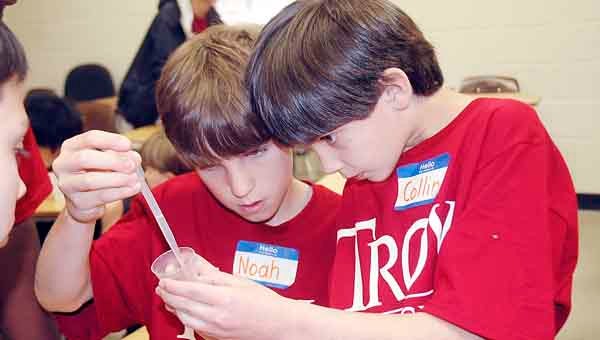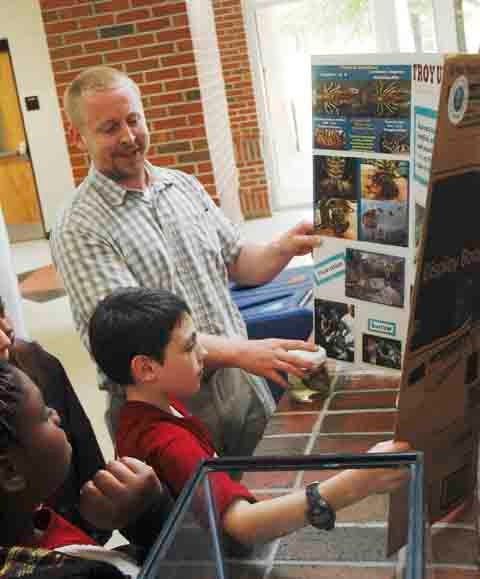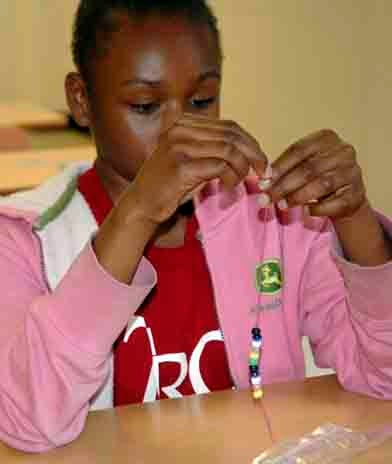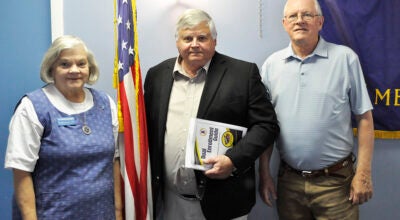Groundwater Festival reinforces importance of clean water (PHOTO GALLERY)
Published 8:36 pm Wednesday, April 30, 2014

Noah Prestwood, left, and Collin King used measuring cups to demonstrate the availability of fresh, surface and groundwater. The Troy Elementary School fourth graders were among 500 students who participated in the Pike County Ground Water Festival at Troy University Wednesday.
Fourth graders from all around Pike County converged on Troy University Wednesday to take part in the 12th Annual Pike County Groundwater Festival.
Nearly 500 students representing 19 classes from Banks, Goshen, Pike County, Pike Liberal Arts and Troy elementary schools and New Life Academy participated in the Groundwater Festival which is designed to bring greater awareness to the importance of water in the lives of all living beings and the necessity of keeping the groundwater clean.
The theme for the 2013 Pike County Groundwater Festival was “Be a Water Hero.”
Janet Gaston, an instructor in the university’s Department of Biological Sciences and event coordinator, said the students attended three classes, “Edible Aquifer,” “Drop in the Bucket” and “Water Bracelets.”
“Each class demonstrated a water quality principle,” Gaston said. “And each was designed to help the students understand why it is so important to keep our groundwater clean and available for future generations.”
The objective of the “Edible Aquifer” class was to help students understand how pollution can get into groundwater and how pumping can cause a decline in the water table and increased sinking of the land.
The Edible Aquifer class was, perhaps, the students’ “coolest.”
The students constructed their own aquifer using, ice for rocks, a soft drink for water, ice cream for soil, red sprinkles for nutrients, green sprinkles for pesticides and chocolate syrup for the soil. Once they completed their aquifer, they pumped it through a straw, devouring sprinkles and all.
Although the earth is covered mainly by water, the students learned that only a “Drop in the Bucket” is available for human consumption.
The classes used measuring cups to demonstrate the availability of fresh, surface and groundwater. They were amazed to learn that 97 percent of the earth’s water is salt water, 2 percent is frozen water and only 1 percent is fresh water and much of that is too far underground or polluted for human use.
Students made Water Bracelets of colored beads to show the path that water takes through various stages.
The yellow bead represented the sun; the clear bead, evaporation; the white bead, condensation; the blue bead, precipitation; the black bead, runoff; and the green bead, plants.
Once their bracelets were completed, the students did the Water Cycle Boogie.
The students visited the Alabama PALS (People Against A Littered State) booth and also learned about crayfish from an aquatic biologist, Jonathan Miller,
Miller said Alabama has more crayfish, snail, mussel, and aquatic turtle species than any state in the United States, a fact that had the students wide-eyed. “More turtles and snails!”
The Pike County Groundwater Festival was first held in 2002. Gaston said the festival’s funding and in-kind support comes from the Alabama Department of Environmental Management, Legacy and local donors.
In addition to ADEM and Legacy, Gaston said the Pike County festival has enjoyed support over the years from the City of Brundidge, Troy University and numerous businesses and organizations including Lockheed Martin, the Choctawhatchee Pea and Yellow Rivers Watershed Management Authority, the Pike County Soil and Water Conservation District, Sodexo, the Troy University Environmental Club, the Choctawhatchee Riverkeeper and other donors and volunteers.
“The festival would not be possible without Troy University’s provision of facilities,” Gaston said.
“And many thanks go to the faculty and students of Troy University’s College of Arts and Sciences and the students of Goshen High School.”









